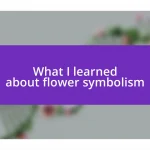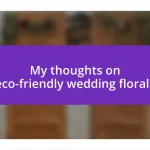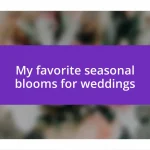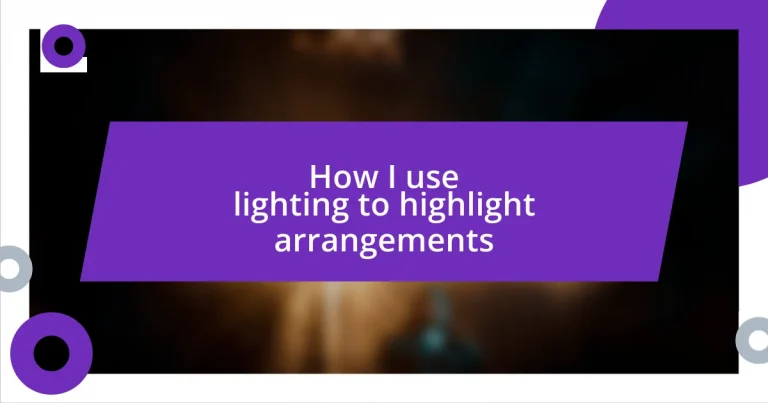Key takeaways:
- Lighting transforms the atmosphere of arrangements, using natural and artificial light to evoke desired moods and highlight focal points.
- Strategic positioning of lights enhances depth and texture, while shadow play can add drama and intrigue to displays.
- Continuous experimentation with different setups, brightness, and color adjustments is essential for achieving captivating arrangements.
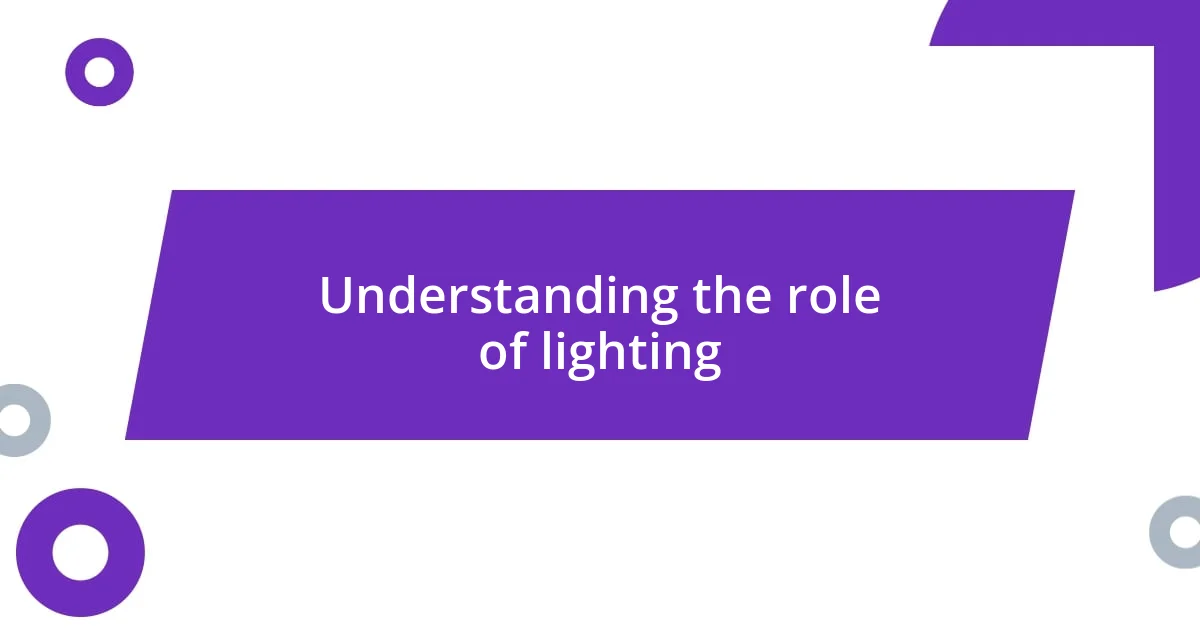
Understanding the role of lighting
Lighting plays a crucial role in how we perceive arrangements; it can dramatically change the mood and highlight certain aspects. For instance, I remember setting up a dinner table where soft, warm lights brought out the rich colors of the food and gave the whole scene a cozy, inviting vibe. Have you ever noticed how the right lighting can transform even the simplest setup into something magical?
When I think about lighting, I see it as a storyteller that dictates the atmosphere of any arrangement. A bright, harsh light can expose every flaw, whereas a dimmer glow can create a sense of mystery and intimacy. This reminds me of a cozy night spent with friends, where the soft flicker of candles turned an ordinary room into a warm haven of laughter and connection.
Ultimately, understanding the role of lighting means more than just illuminating a space; it’s about crafting an experience. The positioning of light can draw attention to the elements I want to showcase, whether it’s a floral centerpiece or an art piece. Have you experimented with different light sources? I find that natural light brings out the vibrancy of colors in arrangements, making flowers look alive, just like they do in nature.
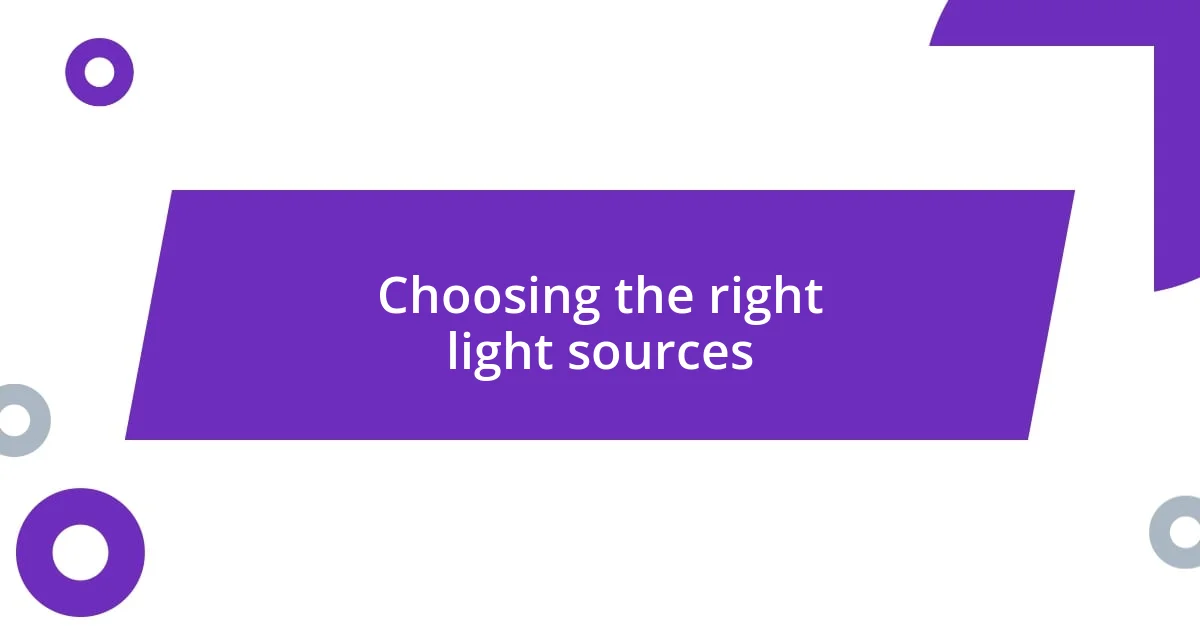
Choosing the right light sources
Choosing the right light sources can be an art in itself. In my experience, I often look for a combination of natural and artificial light to create a balanced environment. Natural light, especially during the golden hour, adds a magical glow to arrangements that artificial sources can’t quite replicate. I remember a sunlit afternoon when I set up a small bouquet on my kitchen table. The way the sunlight danced through the petals brought them to life in a way that was simply enchanting.
When I consider artificial lights, I tend to gravitate toward warm white bulbs. They mimic the glow of candles, wrapping everything in a gentle, comforting embrace. Recently, I used a string of warm fairy lights to highlight a floral arrangement for a small gathering. Seeing everyone smile as the soft lights enhanced the blooms’ colors was a reminder of how vital the right light source can be in elevating a moment. Have you explored both types of lighting? It’s a journey worth taking, blending them thoughtfully to enrich the atmosphere.
Now, let’s compare the commonly used light sources to see what fits different arrangements best:
| Light Source | Best For |
|---|---|
| Natural Light | Enhancing color vibrancy and creating a fresh ambiance. |
| Warm White Bulbs | Creating a cozy feel and softening harsh shadows. |
| LED Lights | Energy efficiency and consistent lighting for long-lasting displays. |
| Colored Lights | Setting a playful or thematic tone for special events. |
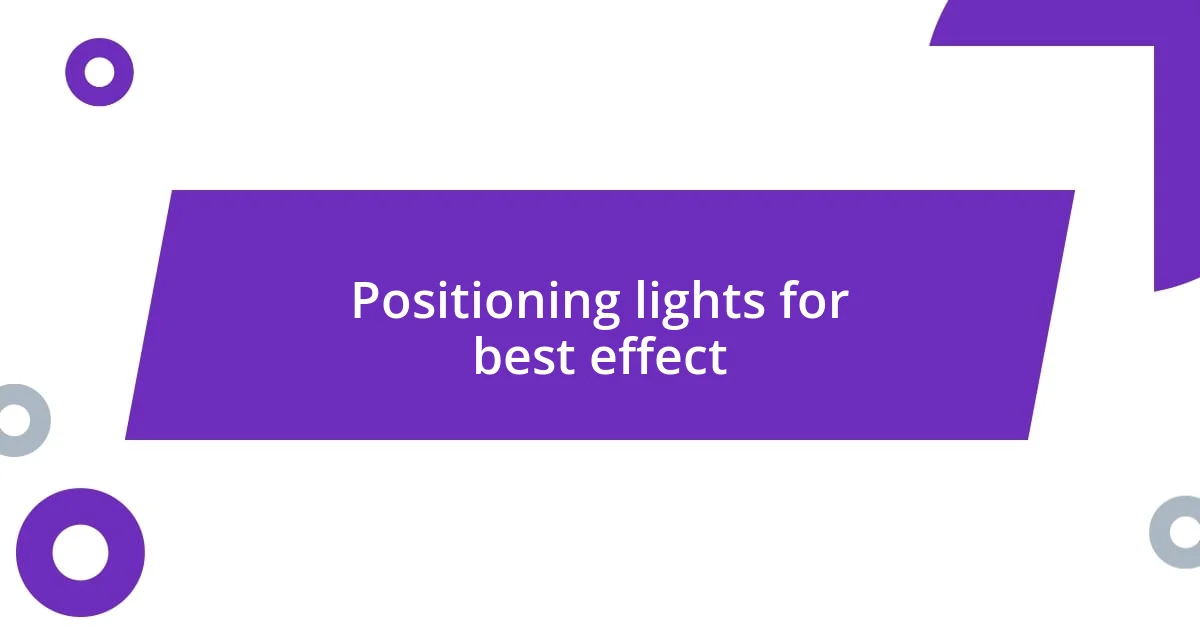
Positioning lights for best effect
To achieve the best effect with lighting, I always consider the placement relative to the arrangement. For instance, elevating a light source can create a dramatic shadow play, adding depth and intrigue. I recall a time when I positioned a lamp behind a tall vase, which cast stunning shadows against the wall, transforming a simple arrangement into a piece of art.
Here’s how I go about positioning lights effectively:
- Identify focal points: Always decide what you want to highlight.
- Experiment with angles: Different angles can produce varying effects, so don’t hesitate to move lights around.
- Consider height: Adjust lights higher or lower—higher can cast enchanting shadows, while lower can emphasize textures.
- Use layering: Combine multiple lights at different levels for a richer visual experience.
- Mind the distance: The closer the light, the more intense the effect; find a balance that flatters your arrangement.
Finding the right position often comes down to trial and error, but the rewarding results are well worth the experimentation.
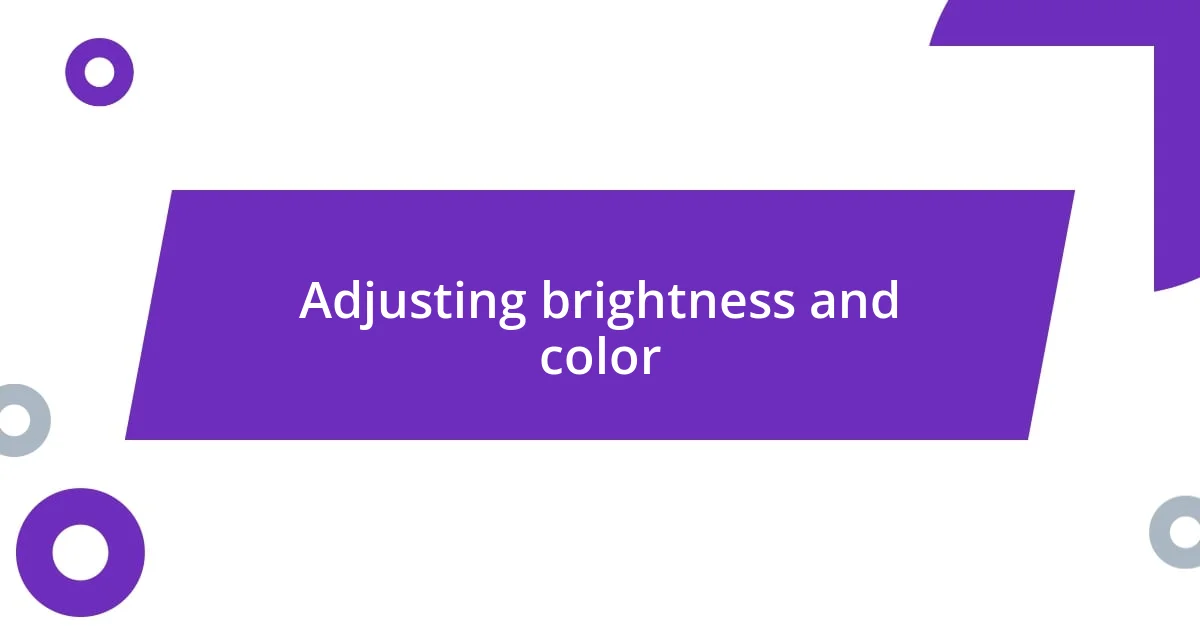
Adjusting brightness and color
When it comes to adjusting brightness, I’ve learned that a little tweak can have a big impact. For instance, using a dimmer switch allows me to control the atmosphere effortlessly. I recently hosted a dinner party where I softened the lights just before dessert; the subdued glow created a cozy intimacy that had everyone leaning in closer, sharing stories and laughter.
Color is another crucial element in lighting arrangements. I often play with colored gel filters or LED bulbs to set different moods. One evening, I experimented with a soft lavender hue to highlight a tranquil flower arrangement. The calmness it exuded invited guests to relax and soak in the evening. Have you ever noticed how certain colors can evoke emotions? It’s fascinating how a shift in color temperature can instantly alter the ambiance of a space.
From my experience, adjusting both brightness and color is an ongoing exploration. I remember a time I was arranging a centerpiece for a special occasion. After experimenting with various brightness levels and warm tones, I discovered that a soft amber glow paired beautifully with the deep reds and greens of the arrangement. The colors seemed to dance together, creating a harmony that was simply captivating. It’s moments like these that highlight the transformative power of thoughtful lighting adjustments.
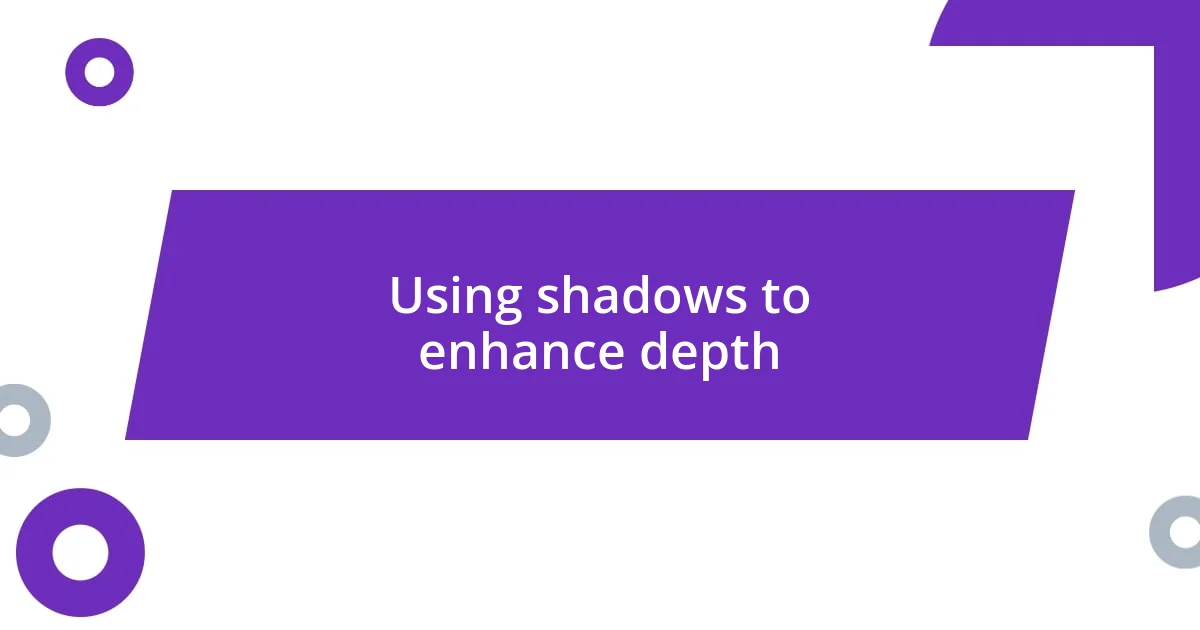
Using shadows to enhance depth
One of the most captivating ways I enhance arrangements is by using shadows strategically. I recall a time when I showcased a collection of delicate pottery. By placing a light at an angle, it cast elongated shadows that highlighted each piece’s unique shape and texture. The shadows not only added depth but also created a mysterious allure that drew my guests in—don’t you think a little intrigue can make all the difference?
Creating depth through shadows is often about balance. When I illuminate larger arrangements, such as a floral centerpiece, I like to experiment with the light’s placement. Sometimes, I’ll light from below or the side to enhance the textures of the leaves and petals. This angle brings out details we might overlook in a flat light, inviting viewers to appreciate the intricate layers. Have you ever noticed how shadows can tell a story, breathing life into a static display?
I find that the dynamic interplay between light and shadow can transform a mundane setting into a dramatic scene. For instance, while decorating a well-lit dining room, I placed a spotlight behind a tall fern, which created an enchanting pattern on the wall. It was as if the plant was dancing, casting shadows that flickered with the rhythm of our laughter during dinner. Moments like these remind me that shadows can elevate our experiences, turning an ordinary arrangement into something truly memorable.
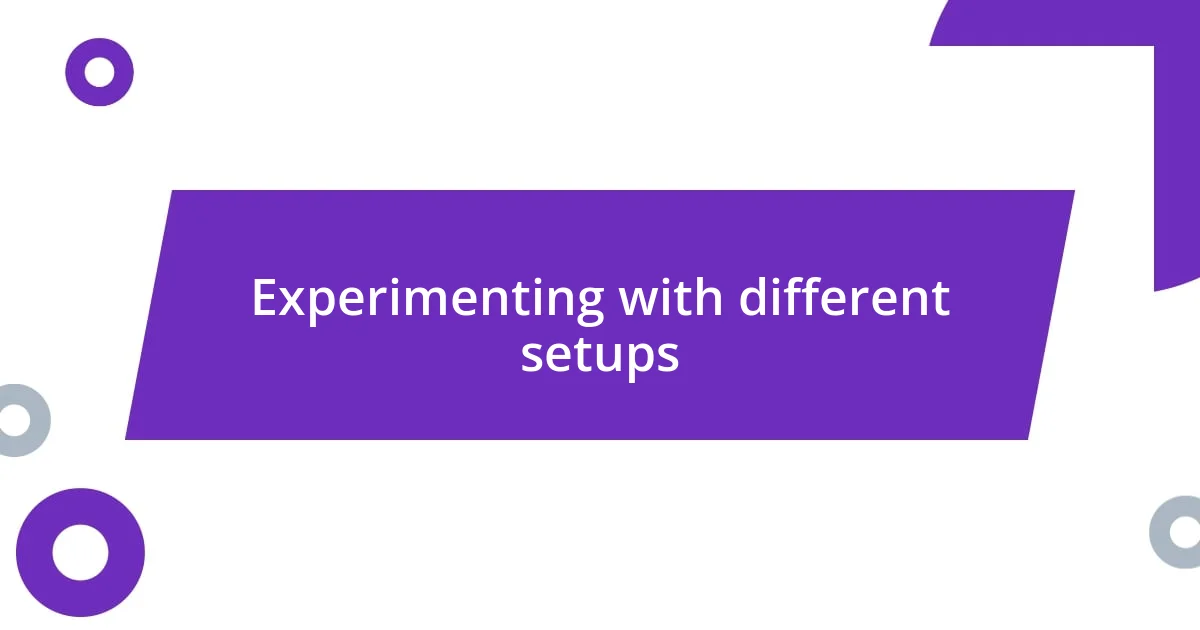
Experimenting with different setups
Experimenting with different setups is where the real magic happens in my creative process. I remember one evening when I created a small vignette on my coffee table that featured a mix of candles and a floral arrangement. I placed the candles at varying heights and used a string of fairy lights draped subtly around the flowers. This setup made the entire arrangement shimmer, instantly transforming the atmosphere from ordinary to enchanting. Have you ever looked at a setup and felt like it had a life of its own? That’s what I aim for.
One technique I often use is changing the angle of the light sources. In one of my recent experiments, I installed a small LED spotlight directed at a vibrant fruit display. By tilting the light just slightly, I noticed how the arrangement morphed—the colors became more vivid, and the shadows played beautifully across the table. It was a simple change, yet it shifted the entire focus, creating an inviting centerpiece rather than just a bowl of fruit. Isn’t it incredible how a slight adjustment can yield such different results?
I’m also a big fan of layering different light sources in a single setup. For instance, at a recent outdoor gathering, I combined lanterns, string lights, and natural moonlight to create an intimate feel. Each light source contributed to an interplay of warmth and a soft glow that wrapped around my guests like a comforting blanket. It was fascinating to see everyone drawn closer together, sharing stories and laughter under that magical glow. If you haven’t played with multiple light sources yet, I encourage you to dive in—there’s a world of possibilities just waiting to be explored.
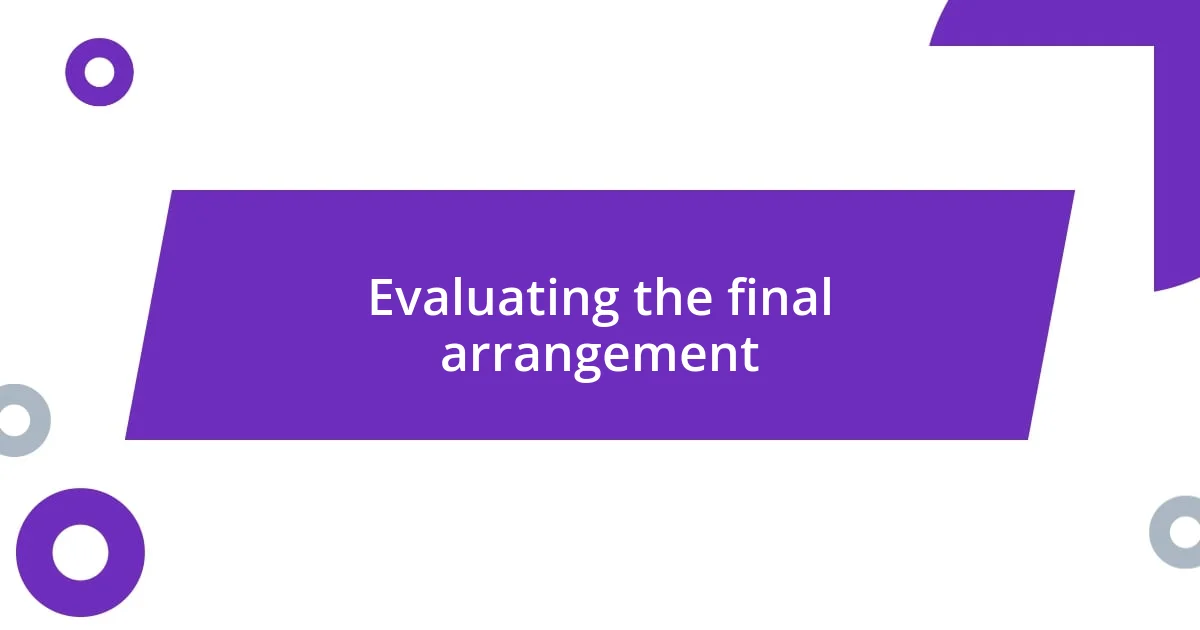
Evaluating the final arrangement
Evaluating the final arrangement takes a keen eye and a willingness to adjust. I recently hosted a small gathering, and after setting up a cozy corner with plush pillows and glowing candles, I paused to assess the overall vibe. Standing there, I realized that the arrangement felt a bit flat—nothing truly stood out. That prompted me to shift a single candle slightly, and suddenly, the warm light flickered just right, casting soft glimmers that instantly elevated the entire scene. Isn’t it amazing how a minor tweak can breathe fresh life into a space?
I often find that evaluating an arrangement involves a bit of trial and error, with my instincts guiding the way. At a friend’s wedding, I was tasked with designing the reception area. Initially, the floral arrangements looked stunning but didn’t resonate with the soft, romantic mood we were aiming for. By dimming one row of lights and adding a few tall candlesticks on the tables, the flowers popped with freshness, and the entire atmosphere felt submerged in romance. Have you ever experienced something similar, where the right lighting made the difference between ordinary and extraordinary?
Ultimately, I believe that every arrangement tells a story, and how we evaluate it can influence that narrative. During a holiday dinner, I had a grand dessert display that looked fabulous, but it needed something more. I placed a light behind the dessert table that illuminated the glass platters, making the treats sparkle like jewels, encouraging everyone to indulge. Reflecting on moments like these, I ask myself—how can I consistently capture that “wow” factor? Each setup teaches me something new about light, shapes, and the unforgettable impact they can have on our experiences.


